Yesterday (April 10), at Hanoi Medical University, the Ministry of Health held a workshop to evaluate the implementation results of Decree No. 111/2017 dated October 5, 2017 of the Government regulating the organization of practical training in health sector training and to provide comments on the content of the decree amendment.
N MANY DIFFICULTIES FOR NON-PUBLISHED SCHOOLS
According to Dr. Vu Van Hoan, Institute of Health Strategy and Policy, the institute conducted research to assess the situation of 5 years of implementing Decree 111 and found that the decree has specified the rights and responsibilities of the relevant parties, the criteria, and specific conditions for implementing and organizing the contents related to practice in universities and hospitals. However, the coordination between schools and hospitals still has "many obstacles". In particular, the situation is very difficult for non-public schools or schools that are new to medical training.
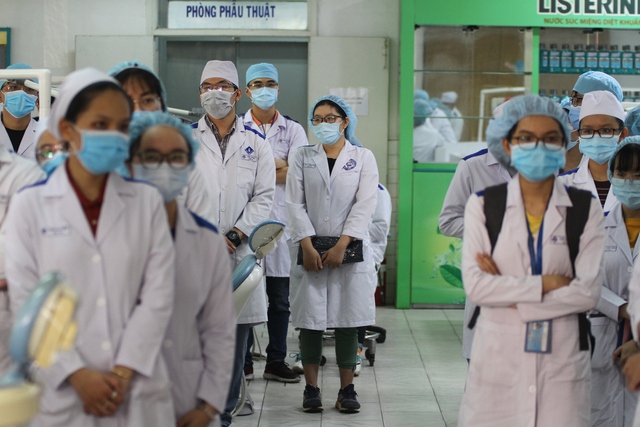
A practice session of medical students at a hospital in Ho Chi Minh City
PHOTO: PHAM HUU
For example, at first glance, non-public schools have more detailed and systematic programs and plans than many public schools. But when analyzed in depth, the research team found that non-public schools are almost entirely dependent on hospitals because they do not have lecturers at the hospitals, which are used as practice facilities for their medical students.
Due to the limited participation of university lecturers in hospitals, coupled with the fact that the practice sites are very far from the university, some schools can only send lecturers to follow and manage, many schools completely entrust the teaching of practice to the hospital. "This is an issue we need to pay attention to because it is important to the quality of practical training," Dr. Vu Van Hoan warned.
Q TOO CROWDED STUDENTS, STUDENTS CAN'T HEAR WHAT THE TEACHER IS SAYING
According to Dr. Vu Van Hoan, there are many regulations in Decree 111 that seem to be guaranteed, but they arise in some local cases. For example, the regulation on the ratio of students/practicing lecturers is not difficult for hospitals in the provinces; but it is difficult to ensure it for key practice facilities in the regions, due to the large number of students. If the number of students can be reduced, so that teachers can "relax more", the quality of training will also be better.
There is also a situation where the general student/bed ratio (or dental chair ratio for maxillofacial specialties) is guaranteed, but in some large hospitals, because students are concentrated on a few very good teachers, clinical classes are so crowded with students that in the end, students cannot hear what the teacher says!
The limited physical facilities of hospitals are also a problem, as hospitals often have to prioritize space for medical examination and treatment, so departmental offices are also significantly reduced.
"Regarding the regulation that universities must ensure that 20% of lecturers participate in practice facilities, to both instruct and provide services, this is extremely difficult. Only large schools that have been established for a long time and have good relationships can handle this part. As for non-public schools, 100% are not able to do so," said Dr. Vu Van Hoan.
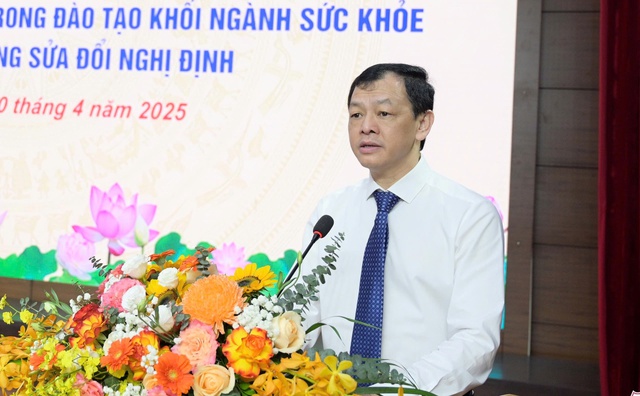
Mr. Nguyen Tri Thuc, Deputy Minister of Health, speaking at the workshop
Photo: Quy Hien
THERE IS LAYER IN PRACTICAL TRAINING IN MEDICAL INDUSTRY
Mr. Nguyen Tri Thuc, Deputy Minister of Health, also said that with the rapid development of universities, especially the emergence of many private schools, the problem of organizing practical training in the medical industry has many shortcomings. In fact, there is an overload in practice facilities.
According to the assessment of some experts, there is currently a leniency in practical training in the medical industry, and a laxity in organizing practical training for students. There is still a situation where students can go wherever they want, do whatever they want. In some schools, when practicing, there is no teacher nearby, so they just ask a doctor from a certain department to monitor them, that doctor is busy with many things, and then everything is ignored. "Over time, the quality of practical training will decrease, while medicine is a practical science, without practice, students will not know what to do," Mr. Nguyen Tri Thuc emphasized.
Mr. Nguyen Tri Thuc said that when he was working at Cho Ray Hospital (HCMC), he often jokingly told students not to sit in the hall reading books when doing practice, because students were often afraid to meet patients. Moreover, there were many students, few patients, patients were often in a state of discomfort, often shouting, and did not like students. Therefore, students just went to the hall to read books, after practice time they went home, there was also roll call, but they did not go to the patient's bed.
"I often say that reading books should be done in a coffee shop rather than sitting in a hospital hall reading books. Once you go to the hospital, you have to practice," said Mr. Nguyen Tri Thuc. He also said that to ensure the quality of practical training, students must be given top priority, students are the center, the standard for all regulations. The goal is to train real doctors, meaning students must be very good at practice, not just good at theory. To ensure the quality of practice, there must not be too many students, not affecting the quality of treatment at the hospital, not affecting the patients.
"The Ministry of Health wants large universities such as medical and pharmaceutical universities in Hanoi, Hue, Ho Chi Minh City University of Medicine and Pharmacy, Thai Nguyen University of Medicine and Pharmacy, Can Tho University of Medicine and Pharmacy, etc., to be key schools in training human resources for the medical sector. With these schools, the Standing Committee of the Party Committee of the Ministry of Health has recently thoroughly implemented the quality control of practical training. The Ministry of Health wants large schools to be elite, to be leading units and not to be lenient in practical training," said Mr. Nguyen Tri Thuc.
Don't do "glossy" hands-on training
According to Professor Le Quang Cuong, Vice Chairman of the State Council of Professors, former Deputy Minister of Health, he often hears hospitals complain that in the past, the opening of majors was relatively favorable, so there were too many students, while the hospital had just built another facility, not enough time to add more space for students to practice. To solve the problem, it is necessary to have an impact from macro policies. Thus, when advising the Government on policies, the health sector needs to closely follow world trends.
A current mistake in school-hospital coordination is to let the two sides negotiate with each other. "This is the work of the nation, not the work of the school or the hospital. We imagine that the hospital or the university is like two wheels of a bicycle in the training program. We cannot have separate regulations for the front wheel and the rear wheel, but must come up with a mechanism so that the hospital and the university must work together to create a common practice program," said Professor Le Quang Cuong.
Professor Le Quang Cuong added: "We agree that there must be a main practice unit, but we must strictly regulate the ratio of students/beds in a very specific way, not in a general way. Another problem is that we are currently training not only for central hospitals but also for provincial hospitals, even for commune health stations... Therefore, it is necessary to conduct research to propose regulations that training facilities in which areas should practice in those areas and around. Avoid the situation where training is conducted in a very far away place and then concentrated in the central hospital, which is just called "glazing" but in reality, there is no learning. To do that, we must add provisions on material investment for medical facilities recognized as practice hospitals, which are places where practice facilities are at lower levels".
Source: https://thanhnien.vn/qua-tai-dao-tao-thuc-hanh-nganh-y-18525041023124285.htm


![[Photo] President Luong Cuong presents the decision to appoint Deputy Head of the Office of the President](https://vphoto.vietnam.vn/thumb/1200x675/vietnam/resource/IMAGE/2025/5/8/501f8ee192f3476ab9f7579c57b423ad)
![[Photo] General Secretary To Lam begins official visit to Russia and attends the 80th Anniversary of Victory over Fascism](https://vphoto.vietnam.vn/thumb/1200x675/vietnam/resource/IMAGE/2025/5/8/5d2566d7f67d4a1e9b88bc677831ec9d)
![[Photo] General Secretary concludes visit to Azerbaijan, departs for visit to Russian Federation](https://vphoto.vietnam.vn/thumb/1200x675/vietnam/resource/IMAGE/2025/5/8/7a135ad280314b66917ad278ce0e26fa)
![[Photo] Prime Minister Pham Minh Chinh meets with the Policy Advisory Council on Private Economic Development](https://vphoto.vietnam.vn/thumb/1200x675/vietnam/resource/IMAGE/2025/5/8/387da60b85cc489ab2aed8442fc3b14a)
![[Photo] National Assembly Chairman Tran Thanh Man chairs the meeting of the Subcommittee on Documents of the First National Assembly Party Congress](https://vphoto.vietnam.vn/thumb/1200x675/vietnam/resource/IMAGE/2025/5/8/72b19a73d94a4affab411fd8c87f4f8d)





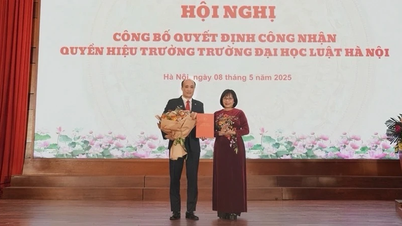
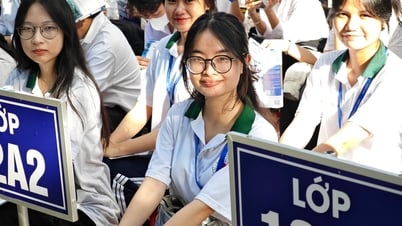





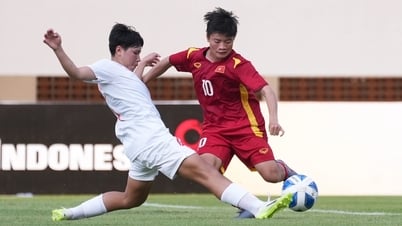
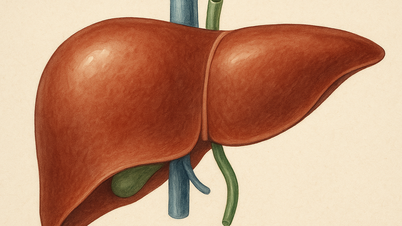
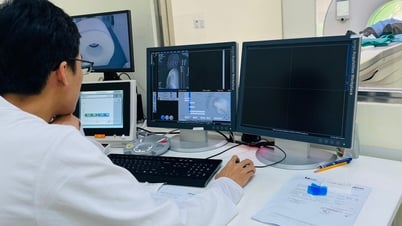
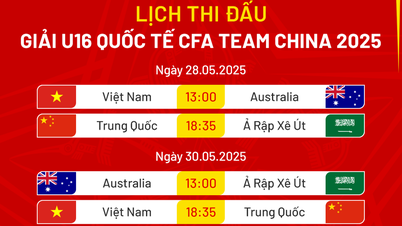
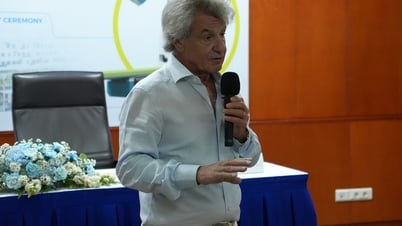
































![[Photo] Prime Minister Pham Minh Chinh talks on the phone with Singaporean Prime Minister Lawrence Wong](https://vphoto.vietnam.vn/thumb/402x226/vietnam/resource/IMAGE/2025/5/8/e2eab082d9bc4fc4a360b28fa0ab94de)


































Comment (0)